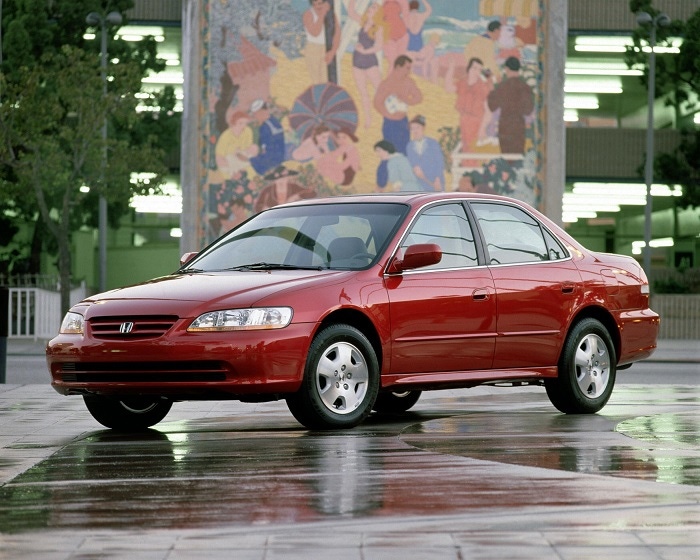Honda Working on Better Recall Strategy
Broad-based media campaigns may be used to reach owners of older vehicles, but that isn’t always a perfect approach either, as some owners may not speak English.
March 12, 2015

Editor’s note: Honda today announces what it bills as a “multimillion-dollar” media campaign urging Honda and Acura owners to check whether their vehicles are under recall. “These ads are a strong call to action from our company designed to break through the clutter, grab the attention of customers driving affected vehicles, and urge that they get required repairs as soon as possible,” American Honda Executive Vice President John Mendel says in a statement. Ads will begin running in print, digital and on radio March 16. Full-page ads will appear in 120 newspapers and 30-second radio ads will air in 110 markets. Honda also is sponsoring Facebook posts “that mention the specific vehicle owned by each identified user (and) will appear on owners’ timelines.” The campaign will target 11 U.S. states and territories with high humidity. High humidity has been traced to a greater risk of inflators rupturing in older Takata front airbags. Ads will be in both English and Spanish depending on the market.
MIAMI BEACH, FL – How do you get in touch with the second, third or fourth owner of a 13-year-old vehicle?
As the automaker most affected by the Takata recall of faulty airbag inflators, Honda is working up a strategy to better reach those people driving vehicles long out of warranty.
“We have some plans we’re looking at, a strategy we’re considering…so stay tuned,” Jeff Conrad, senior vice president-Honda Div. for American Honda, tells WardsAuto in a recent interview.
With the average lifespan of a vehicle getting longer as quality and reliability climb industrywide, chances are a car or light truck purchased new today will be on the road longer and have more owners than a similar model 20 years ago.
Conrad says Honda takes the typical steps many automakers do to reach owners of recalled vehicles, sending letters and making phone calls.
But that only works if owners can be identified. If an owner sells his own vehicle or a vehicle ends up on an independent used lot, that strategy may not work.
Conrad says for these situations Honda has employed broad-based media campaigns.
“You start to look and say, what kind of message can you put out there? What sort of media can you put that message in, where (the people you need to reach will) be seeing it, hearing it (or) somebody can tell them about it?” he says.
But this isn’t always a perfect approach either, Conrad notes as some owners may not speak English or whatever language the message may be in.
Many of the reported accidents in Hondas with faulty Takata inflators have been in the Southern U.S., home to a large Spanish-speaking population.
Some of those killed in older Hondas with faulty Takata inflators reportedly were Vietnamese and Chinese, although their English-language skills are unknown.
Conrad says Honda hopes to deploy a new strategy to reach owners of older recalled models soon, without specifying timing.
Reaching the owner of a recalled vehicle is only half the battle. Many automakers struggle to get people to bring their car or light truck in for the required repairs.
“In terms of how do you get somebody to look at something (you send them), that’s an even bigger challenge,” Conrad says.
Regulators and industry pundits have been brainstorming ways to get recalls completed sooner.
Some have suggested the use of color-coded messages, with red or orange possibly being used for issues that are the most potentially life-threatening.
Conrad doesn’t see this approach as useful.
“You could put (a recall notice) in color-coded envelopes, but to some people when they see bright orange come through it looks like junk mail to them, so I’m not sure that’s the answer,” he says.
Conrad likes the idea of requiring states with vehicle inspection laws to check for outstanding recalls when vehicles come in for emissions, safety or VIN checks. More than half of U.S. states, as well as the District of Columbia, require vehicle inspections, although rules may vary by timeframe and counties.
“That’s really out of our control, but it is something that municipalities, states in particular, could take up. For that matter, (the) federal government could take it up,” Conrad says.
Honda last week came out in support of a bill by Sen. Edward Markey and Sen. Richard Blumenthal that would prevent a vehicle from being registered if it had any outstanding recalls.
“Our goal is to achieve a 100% repair rate for every recall in order to prevent injuries and save lives, and this legislation will help achieve that,” Rick Schostek, executive vice president-Honda North America, says in a statement.
Honda says a third of recalled vehicles in the U.S. are never brought to the dealer for repairs, and the recall-completion rate is much lower for older vehicles than newer vehicles.
The automaker is encouraging drivers of Hondas and Acuras to check for outstanding recalls by visiting www.recalls.honda.com or www.recalls.acura.com.
You May Also Like